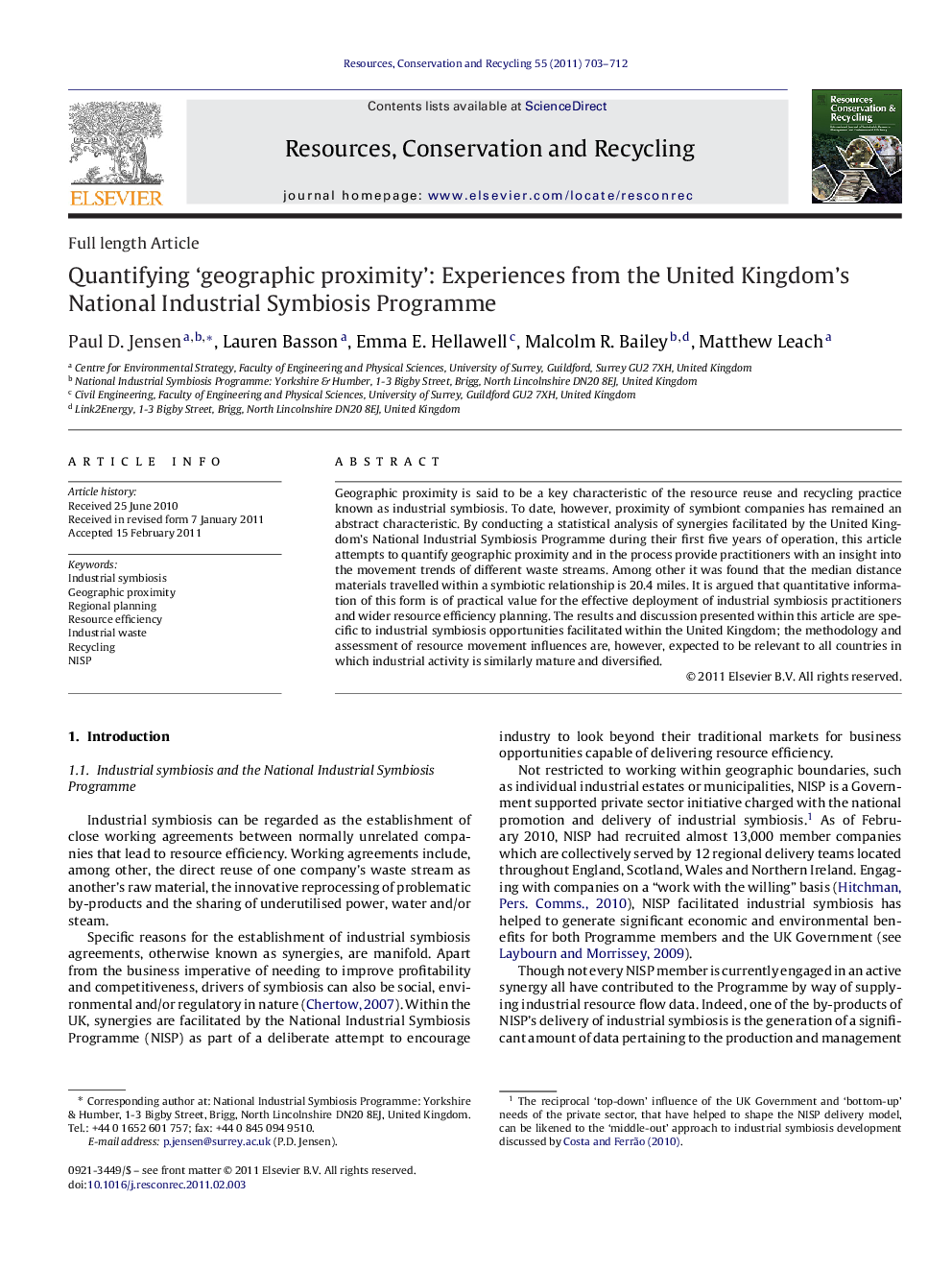| Article ID | Journal | Published Year | Pages | File Type |
|---|---|---|---|---|
| 1063403 | Resources, Conservation and Recycling | 2011 | 10 Pages |
Geographic proximity is said to be a key characteristic of the resource reuse and recycling practice known as industrial symbiosis. To date, however, proximity of symbiont companies has remained an abstract characteristic. By conducting a statistical analysis of synergies facilitated by the United Kingdom's National Industrial Symbiosis Programme during their first five years of operation, this article attempts to quantify geographic proximity and in the process provide practitioners with an insight into the movement trends of different waste streams. Among other it was found that the median distance materials travelled within a symbiotic relationship is 20.4 miles. It is argued that quantitative information of this form is of practical value for the effective deployment of industrial symbiosis practitioners and wider resource efficiency planning. The results and discussion presented within this article are specific to industrial symbiosis opportunities facilitated within the United Kingdom; the methodology and assessment of resource movement influences are, however, expected to be relevant to all countries in which industrial activity is similarly mature and diversified.
